Oyster mushrooms are a common gourmet and medicinal mushroom family that grow wild in subtropical and temperate climates internationally. Asian cultures – Chinese, Korean, and Japanese – have been using oyster mushrooms for centuries as a delicacy to give dishes a healthy and textured addition. Today, we see people everywhere embracing this savory mushroom to add to their household and restaurant cuisines, but they’re also renowned for much more than just their flavor. In fact, the use of oyster mushrooms for medicinal purposes has grown so much that, in the past few decades, it’s also become commonplace to grow cultivated oyster mushroom species at home or on mushroom farms so they're more easily accessible to all.
Yet, while the popularity of oyster mushrooms has risen, many are still in the dark about the benefits of eating these healthy fungi, the various species that fall under the oyster mushroom umbrella, how to grow them at home, and more. We’re diving into the nitty gritty of all things oyster mushrooms! Let’s go.
What are oyster mushrooms?
Just to build off what we were saying above, oyster mushrooms are the third most commonly cultivated mushroom species in the entire world. They get their name from their oyster shell shape and short stem. Note: at times, oyster mushrooms don’t even have a stem!
When found where mother nature put them, you will only come across oyster mushrooms growing wild in wooded areas (literally growing ON wood). However, whether they’re cultivated or growing wild, they come in a variety of colors and shapes making them a diverse family of mushrooms. If you ever come across these at a natural foods store, you’ll likely see various species available for purchase in the colors yellow, pink, an almost purple color, and, of course, your traditional brown and white oyster mushrooms.
When cooked, oyster mushrooms are said to have a savory flavor, with some people saying it has a hint of seafood-ey texture and taste to it. We’ll let you be the judge on that front, but maybe it’s named “oyster” mushroom for a reason? The jury’s out.
No matter what, though, nearly every type of oyster mushroom is edible and contains numerous minerals and compounds that make it an excellent meal addition. Speaking of…
What are the benefits of eating oyster mushrooms?
Besides being highly edible across the entire family of mushroom species, oyster mushrooms are also:
- Super high in protein (some species are up of 35% protein), making them a great meat substitute for our veg folks out there
- Highly digestible – gimme that fiber!
- Full of helpful minerals like potassium, copper, magnesium, zinc, and more
- Chock full of cancer-fighting beta-glucans (15-20% in some species!)
- Immunomodulating - a.k.a. they help balance your immune system to fight off harmful viruses
- And, in some cases, shown to lower bad cholesterol and regulate blood-sugar levels by containing natural statins
A healthy boost and flavor to boot? We’ll take it.
Mushroom Nutrition Facts
According to the FoodData Central Database, oyster mushrooms boast a suite of incredible nutrients including:
- Calories: 28
- Carbs: 5 grams
- Protein: 3 grams
- Fat: <1 gram
- Fiber: 2 grams
- Niacin: 27% of the Daily Value (DV)
- Pantothenic acid (vitamin B5): 22% of the DV
- Folate: 8% of the DV
- Choline: 8% of the DV
- Potassium: 8% of the DV
- Iron: 6% of the DV
- Phosphorus: 8% of the DV
- Zinc: 6% of the DV
Learn more about the potential health benefits of oyster mushrooms here.
What are the types of oyster mushrooms?
Did you know that there are 202 known oyster mushroom family members?! Yes - 202. Wild. For the purposes of this article, we’re focusing on the most well-known species in the oyster mushroom family, but if you want to do research beyond what we’re sharing here, knock yourself out (in fact, we encourage it) – but if you’re just getting started with your oyster mushroom journey, here’s a good kicking off point:
Pearl (pleurotus ostreatus)
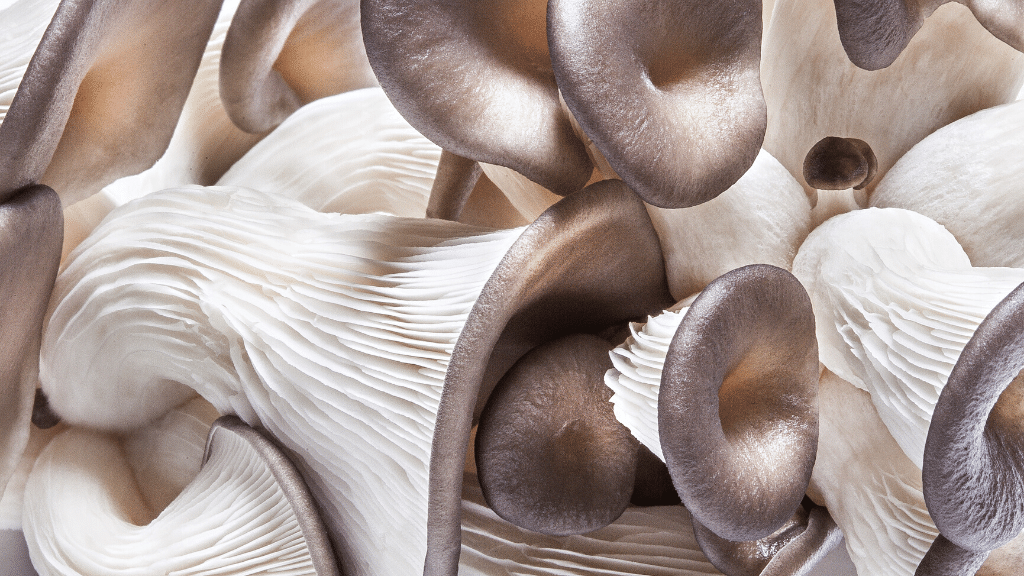
Pearl oyster mushrooms (pleurotus ostreatus) are the it girl when it comes to oyster mushrooms. Yup, these are the mushrooms you see plastered on ads for oyster mushroom products because they’re a North American favorite. They’re found growing wild in temperate North American forests, as well as sub-tropical and temperate wooded areas around the globe, and are most likely going to be found growing on a tree trunk or branch. They have a mild taste as compared to some of their other family members but are said to totally complement the taste of eggs (what a perfect way to spice up breakfast?!)
Blue (pleurotus ostreatus var. columbinus)
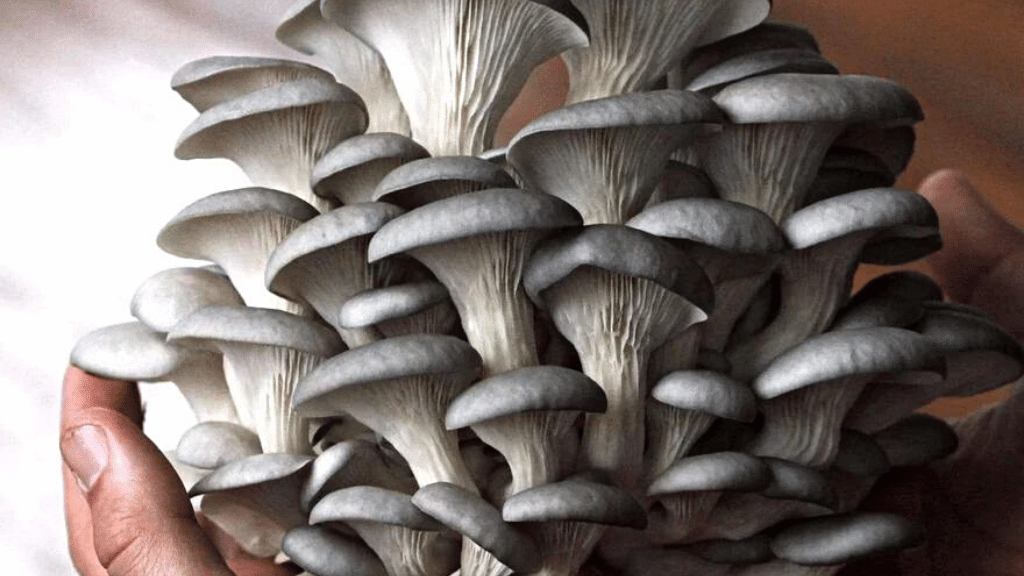
Image Source: https://northspore.com/products/grow-your-own-oyster-mushrooms
*Pretty blue mushrooms have entered the chat!* Blue oyster mushrooms (pleurotus ostreatus var. columbinus) got their name from their immature phase – a.k.a. when the mushrooms first start to bloom, they have a blue cap. When reaching full maturity, blue oysters will eventually turn a greyer color, but we’re here for the bright blue they start at. Despite their color being a bit off-putting for food, these mushrooms are okay to eat! Unlike some other oyster mushroom species that prefer more temperate climates, blue oysters actually thrive in the cold and are found all over North American in climates with temperatures ranging from 45°F to 65°F.
The flavor is typically earthy and rich, but a quick word of advice if you’re cooking with them: chop the stem into fine pieces as it can sometimes be a bit chewy once cooked.
Golden (pleurotus citrinopileatu)
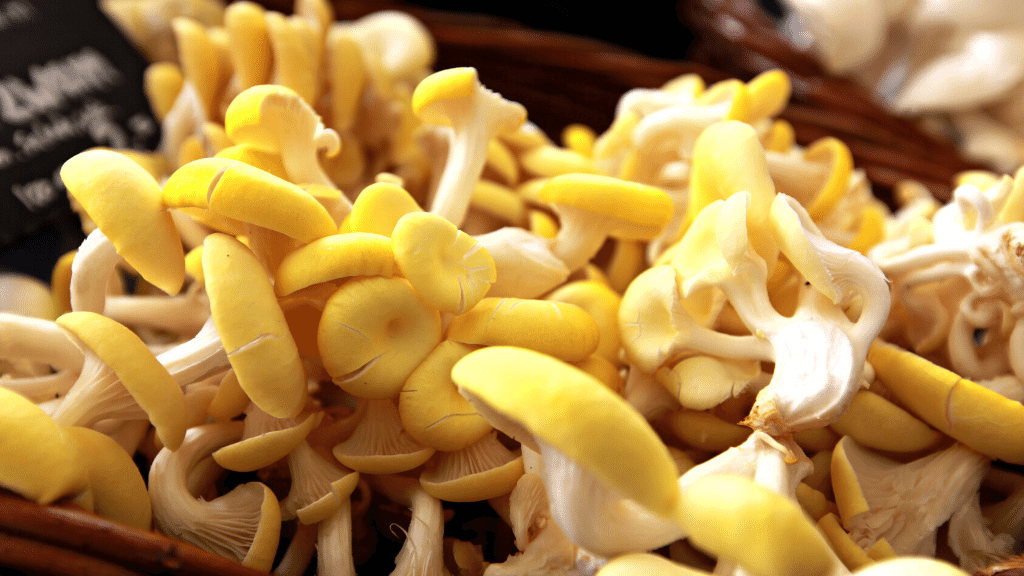
Also known as yellow oyster mushrooms, golden oysters (pleurotus citrinopileatu) almost resemble a bright yellow flower that pops up in your garden in late spring. In fact, you’re most likely to find golden oyster mushrooms for sale at farmer's markets in late spring/early summer due to their fragile state not being prone to travel. Why are they fragile? Well, the caps of golden oysters tend to be on the smaller side with a delicate body exterior. Despite the delicate texture, golden oyster mushrooms are aromatic and tasteful, making them a fun addition to meals like salad, pasta, soups, or stews.
Pink (pleurortus djamor)
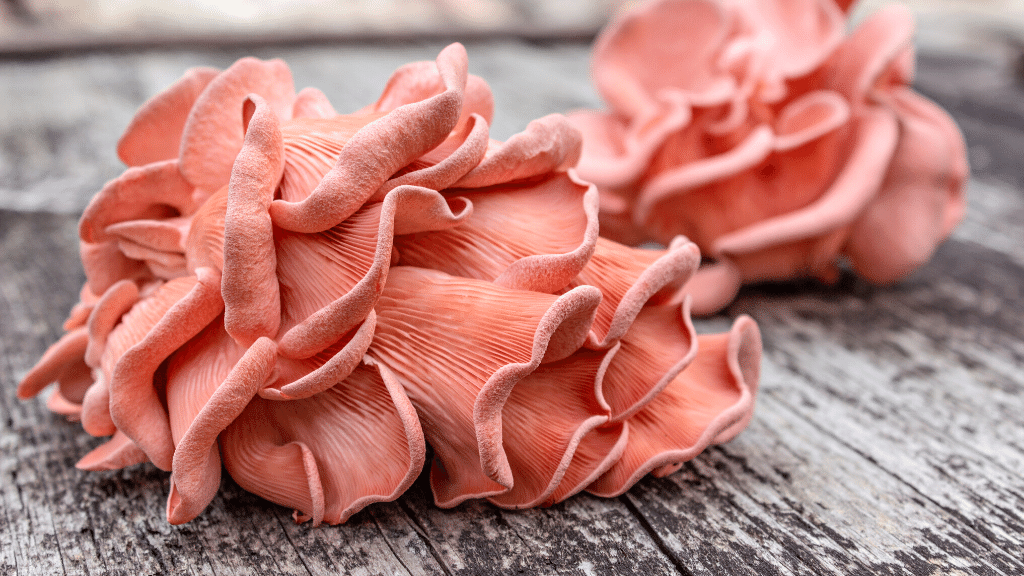
You might be catching on to a theme at this point. The name doesn’t like…these mushrooms are literally pink. Pink oyster mushrooms (pleurortus djamor) remind a lot of people of the color of flamingos, spring bouquets, or fresh salmon – which makes sense why people also call them flamingo oysters. Unlike its cousins, this oyster mushroom prefers the subtropical climates of the world and can be found growing in places where it rarely, if ever, gets chilly. As for taste, pink oyster mushrooms have a strong, woody smell and can be tougher in exterior than other oyster mushrooms.
They are often used for a seafood substitute in chowders, and, yes, unfortunately, the pink color subsides once cooked. Bummer, we know.
King (pleurotus eryngii)
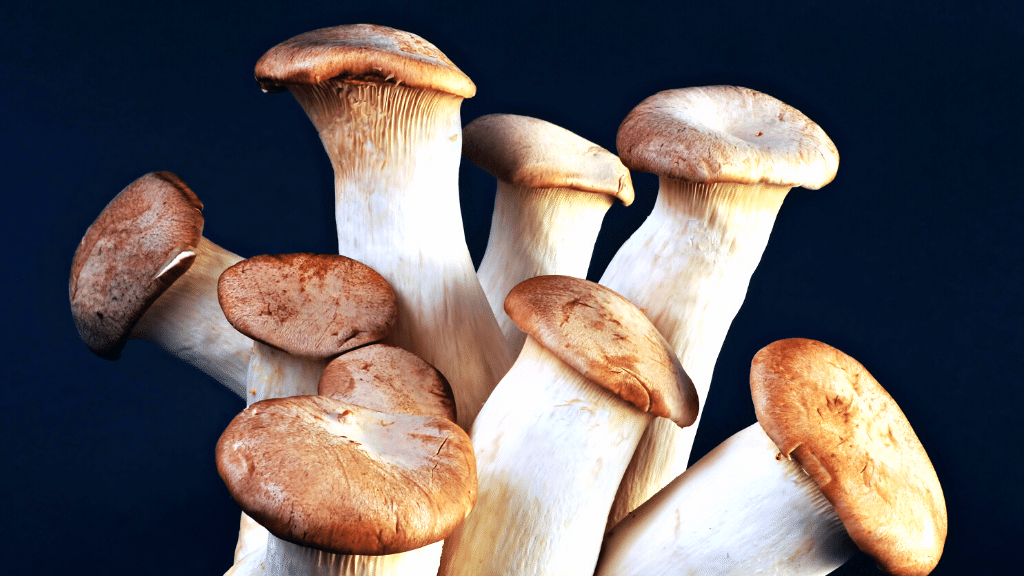
All hail king oyster mushrooms (pleurotus eryngii). Widely grown across the world, king oysters are known for their large cap and stem, and are a standout at natural food and Asian markets where they’re most commonly sold. With its mild taste, it’s a commonly used mushroom in a variety of dishes – but people do say that when the stem is sliced width-wise, king oysters can resemble scallops in taste and texture. For all our vegetarians and vegans out there, give this a try!
Phoenix (pleurotus pulmonarius)
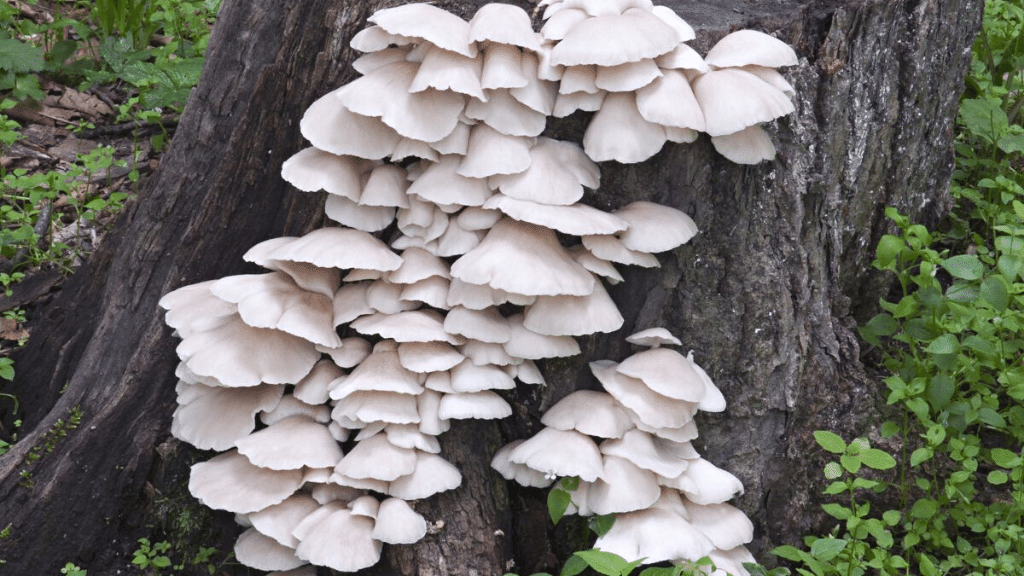
Image Source: https://grocycle.com/phoenix-oyster-mushroom/
Phoenix oyster mushrooms (pleurotus pulmonarius) love their warm weather. Guess it makes sense that they were named after Phoenix, Arizona then, huh? You’ll find these growing in the summer months or in warmer climates (think 75°F to 95°F at all times). These mushrooms can be easily spotted by their lilac tinted spore prints and smaller size. Many will also refer to them as the “lung oyster” because of their lung shape. To each their own. As for taste, they’re super light in flavor and, like many other oyster mushrooms, are extremely versatile. Cook ‘em up however you want.
Elm (hypsizygus ulmarius)
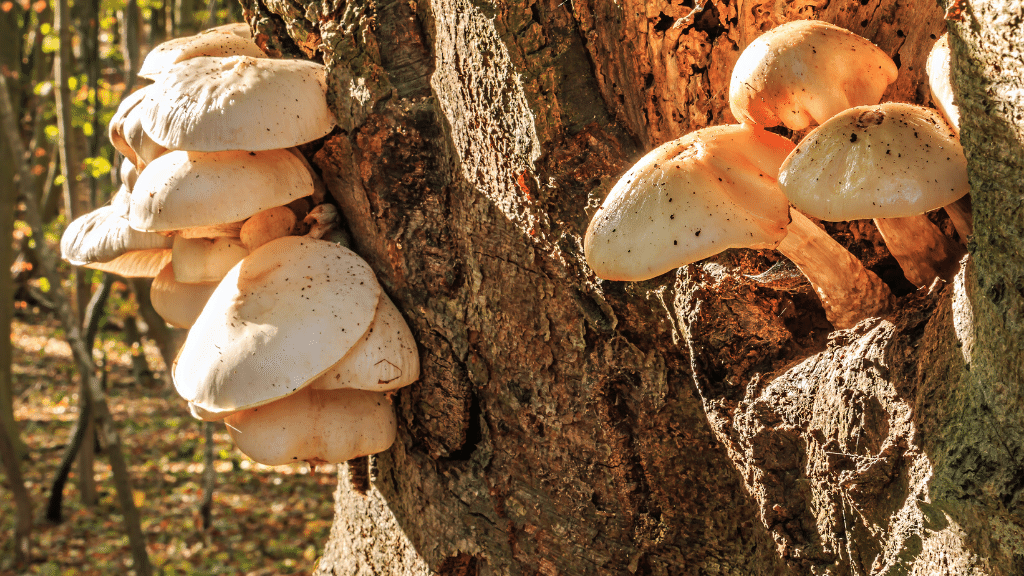
Many might think that throwing elm oyster mushrooms (hypsizygus ulmarius) is the same thing as throwing an oyster mushroom imposter on this list, but we’ll explain why in just a second. Elm mushrooms are lumped into this family of mushrooms because they grow on wood in clusters and are highly edible. However, they can also be attributed to the beech oyster family (check out the scientific name for reference). Your call! Regardless of whoever’s family they belong to, elm oyster mushrooms are a common mushroom that grows wild in Europe, North America, and other temperate climates. It fruits high up on tree trunks and has large fruiting bodies that are good for a variety of dishes. They have a light, woody flavor and cook super quickly.
We like to think of elm oyster mushrooms as an honorary oyster family member since we’re an inclusive bunch here at Remeday.
Poisonous oyster mushroom lookalikes!
The bad news about oyster mushrooms is that they have a few lookalikes that have been proven to be toxic to human beings, making it SUPER important to do your homework if you’re foraging for these bad boys. A good starting place is to remember that true oyster mushrooms only grow on wood, which eliminates a few detrimental species from your take home stash right off the bat: white mushrooms (tricholoma, amanita, and some agaricus).
The other toxic lookalikes to be wary of include (queue the Halloween-sounding mushroom species names):
1. Ghost fungus
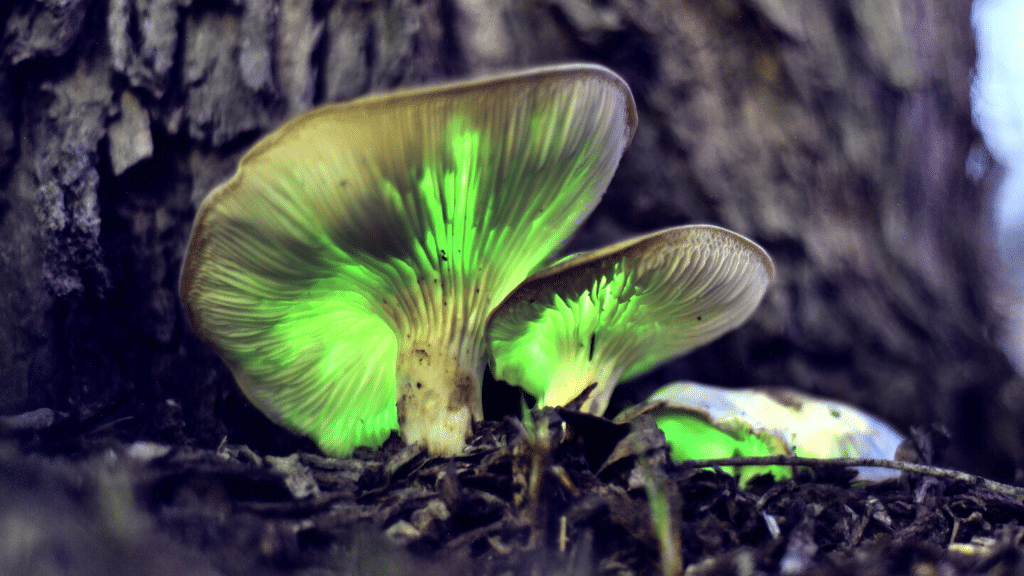
Like we said, Halloween! Ghost fungus (omphalotus nidiformis) is one of those mushrooms that naturally glows in the dark, which is pretty damn cool from our perspective. Only downside? It’s super poisonous – not to the point that you’d die, but you’d be super uncomfortable for a few hours after eating. These mushrooms only grow in Australia (oh Oz, you truly have all the dangerous things, huh?), Japan, and India, so many people don’t have to worry about mistaking these mushrooms with common oyster mushroom species when out foraging.
Learn more about the ghost fungus here.
2. Ivory funnel
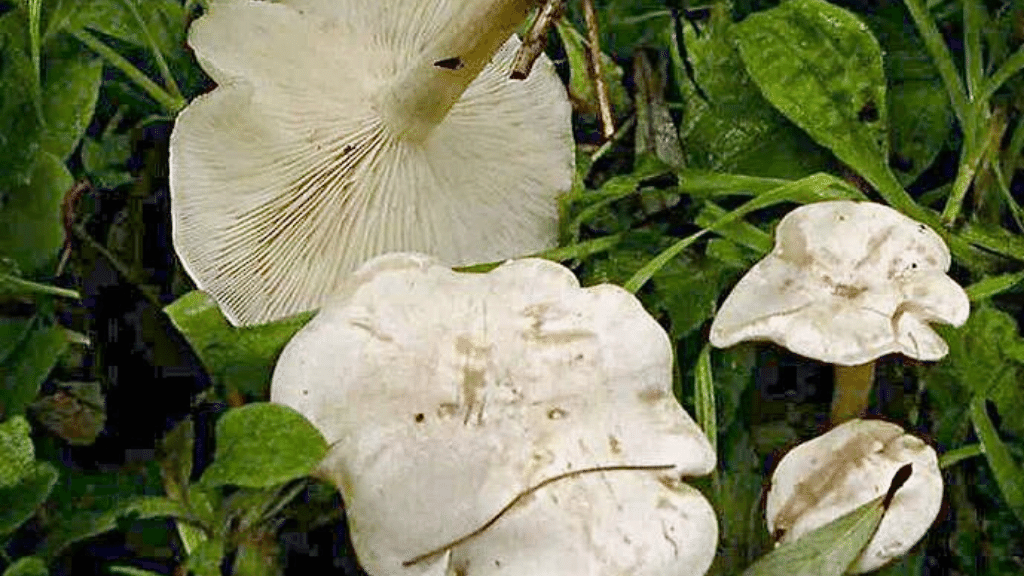
We truly love all the people who named mushrooms and their creativity (or lack thereof). Ivory funnel mushrooms (clitocybe dealbata) look just like (yes, you guessed it) ivory funnels. It’s nicknamed the sweating mushroom because, when eaten, it causes people to profusely sweat and then have abdomen pain, nausea, diarrhea, blurred vision and a hard time breathing. Yikes. Some sites in the UK list it as "Deadly Poisonous".
Learn more about the ivory funnel here.
3. Jack-o-lantern
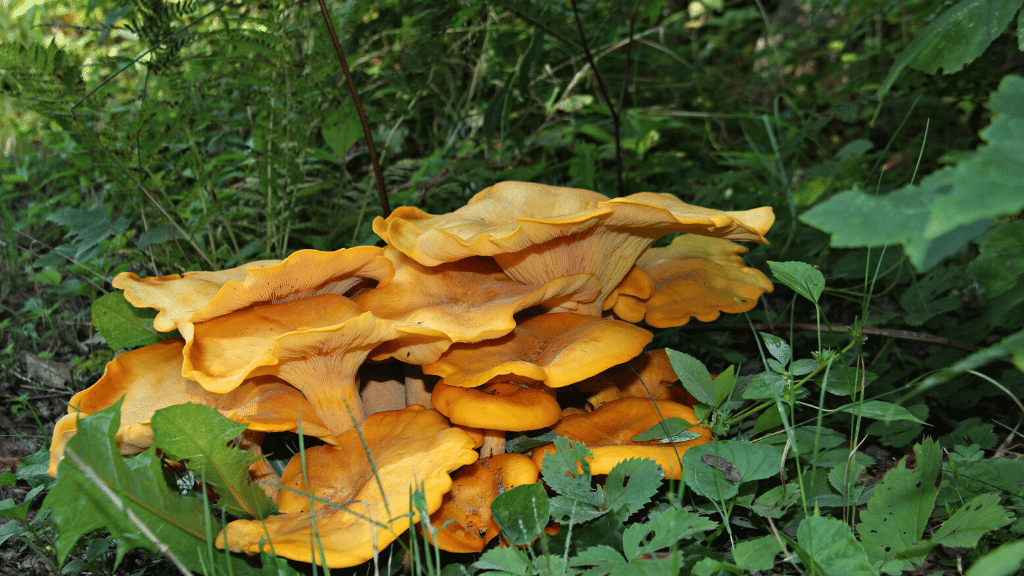
Recognized for its aesthetic similarities to some species of oyster mushrooms, jack-o-lantern mushrooms (omphalotus olearius) can be most easily identified for their bright orange exterior.
We know, we know - shocker given the name. It’s not fatal to eat jack-o-lantern mushrooms, but we don’t recommend it since most people report having extreme stomach cramping, diarrhea, and nausea when consuming these tricky guys. 10/10 do not recommend. Some sites list it as poisonous given its proneness to illness.
Learn more about the Jack O Lantern fungus here.
The best oyster mushrooms for grow kits
As we mentioned earlier, the great thing about oyster mushrooms is that you can grow a number of species right at home! The best species to try growing at home include pearl oyster mushrooms, pink oyster mushrooms, golden (or yellow) oyster mushrooms, and blue oyster mushrooms because of their delicious taste, availability on the commercial market, and ease of use in a variety of dishes.
Plus, all of these mushroom species are safe for kids to eat (or try growing themselves)! Could be a fun thing for you to try with your little one(s).
If you’re interested in getting into this hobby, we made a handy dandy mushroom home grow kit manual for you to check out that highlights our favorite brands, pricing, and more.
What are the best oyster mushroom recipes?
When it comes to cooking oyster mushrooms, the options really are endless. Oyster mushrooms make a great complementary ingredient to pastas, soups, stews, quesadillas, pizzas, and more. Any dish that calls for white or portobello mushrooms can reasonably be substituted with oysters.
We scoured the internet and asked our gourmet shroom friends what their favorite oyster mushroom recipes are. Check them out!
1. Sautéed Oyster Mushrooms with Garlic
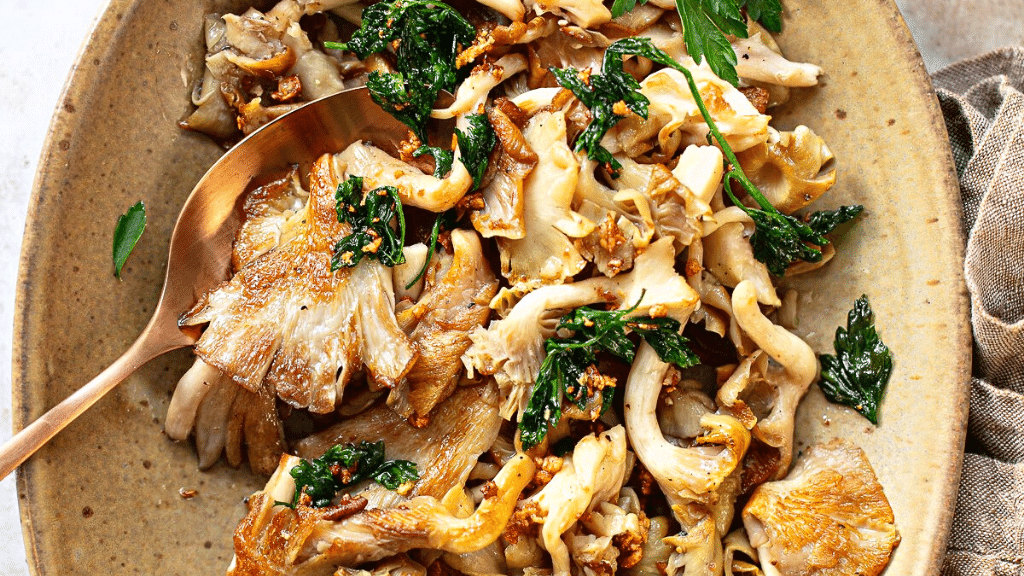
This is one of the easiest (and most delicious) ways to showcase the deliciousness of your oyster mushrooms. This is a great recipe if you want to feature your oysters as a side dish.
Check out the recipe on FamilyStyleFood's blog here.
2. Fried Oyster Mushrooms
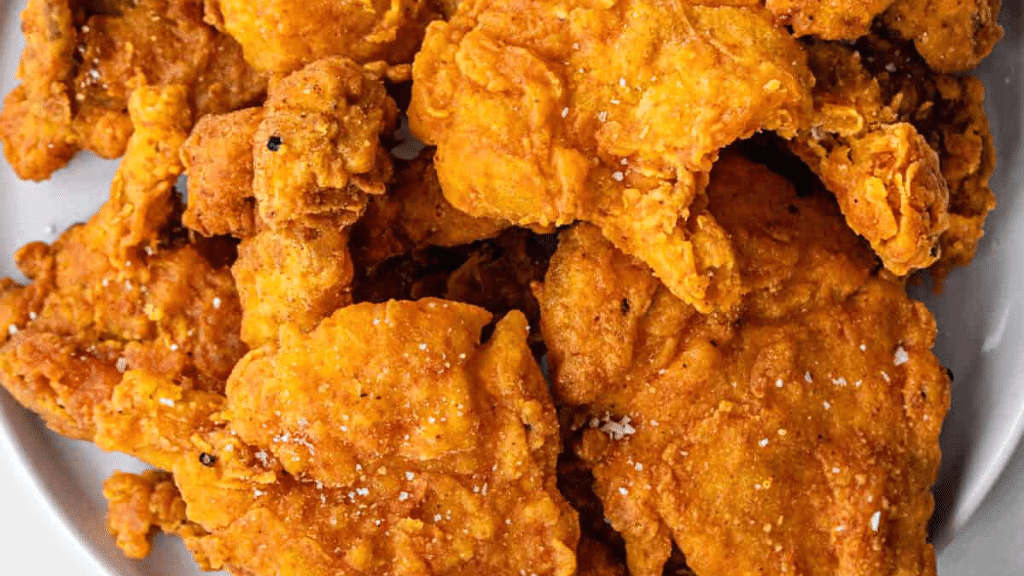
Fried oysters are going to put your go-to fried sides to shame. If you've never tried fried mushrooms before, you're really missing out. This is especially popular for your friends who don't really love the texture of mushrooms. Frying oysters gives them just enough crunch to bring out the flavor and hide the mushroomy texture.
Check out this recipe on Cooking With Ayeh here.
3. Crispy Oyster Mushroom Quesadillas

Want to step up your appetizer game? Wow your guests with this incredible, easy, and delicious crispy oyster mushroom quesadilla from Bon Appetit. This recipe allows a lot of room for creativity. Add ingredients. Take away ingredients. Make a delicious dipping salsa. The options are endless.
Check out the recipe here.
4. Vegan Cacio e Pepe with Garlicky Mushrooms
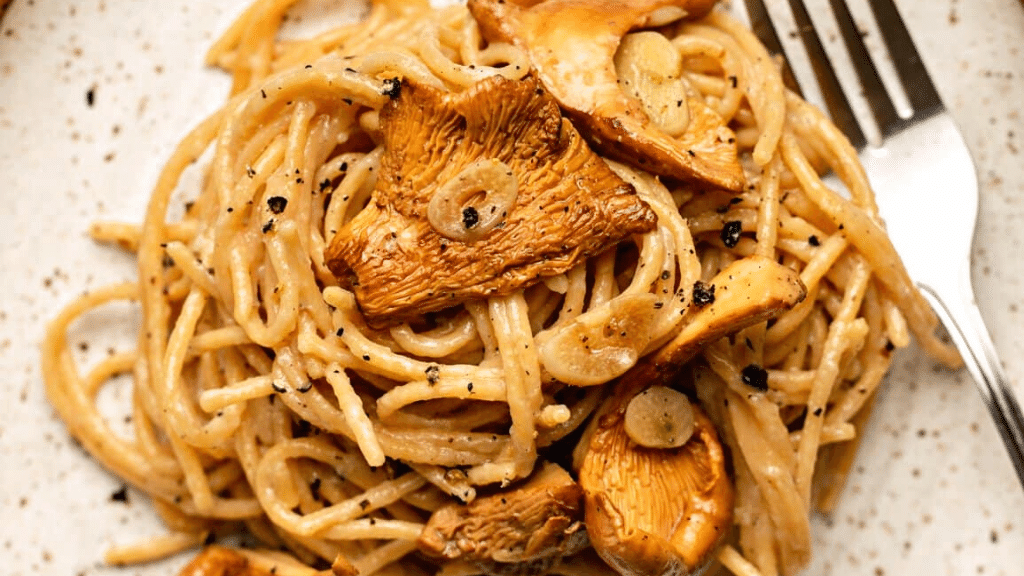
Is pasta your go-to? Then you're going to LOVE this vegan cacio e pepe recipe featuring delicious oyster mushrooms. Add garlic with reckless abandon and show off your cooking skills with this easy vegan recipe.
Check it out on From My Bowl's blog here.
5. Sheet Pan Gnocchi with Soy-Dressed Oyster Mushrooms

More of a gnocchi person? We've got you covered. This easy sheet-pan recipe takes the comfort of gnocchi, the deliciousness of mushrooms, and the flavors of soy and combines them into an easy one-dish recipe that is sure to impress your guests.
Check it out on Bon Appetit's site here.
If you end up growing oyster mushrooms at home, or simply make a bomb.com meal with your favorite type of oyster mushroom, please (PLEASE) let us know! It makes our day mush, mush better to know this information has been helpful to you.
Better yet, why not support a local mushroom grower by buying your oyster mushrooms from a mushroom farm in your area?

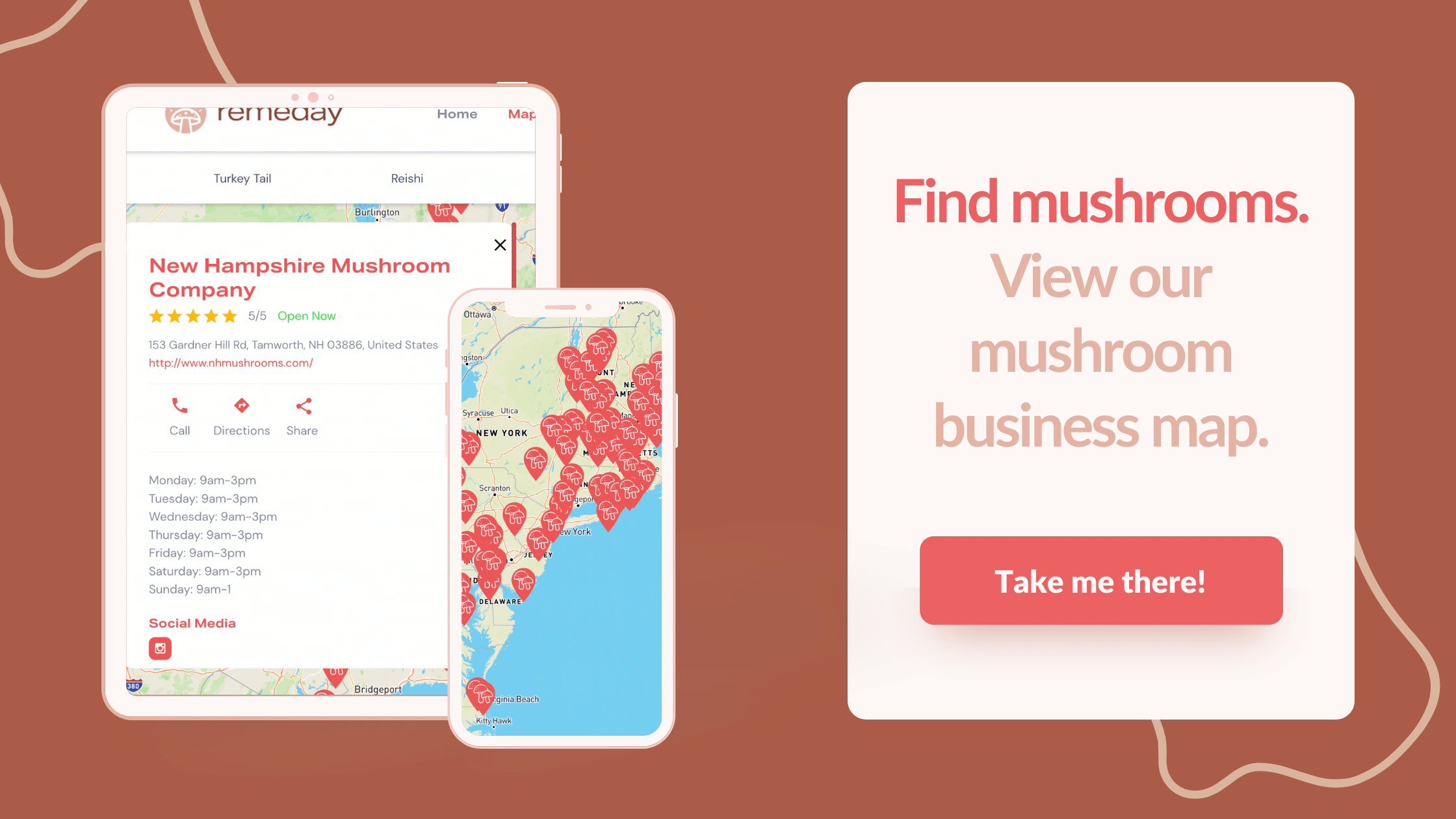
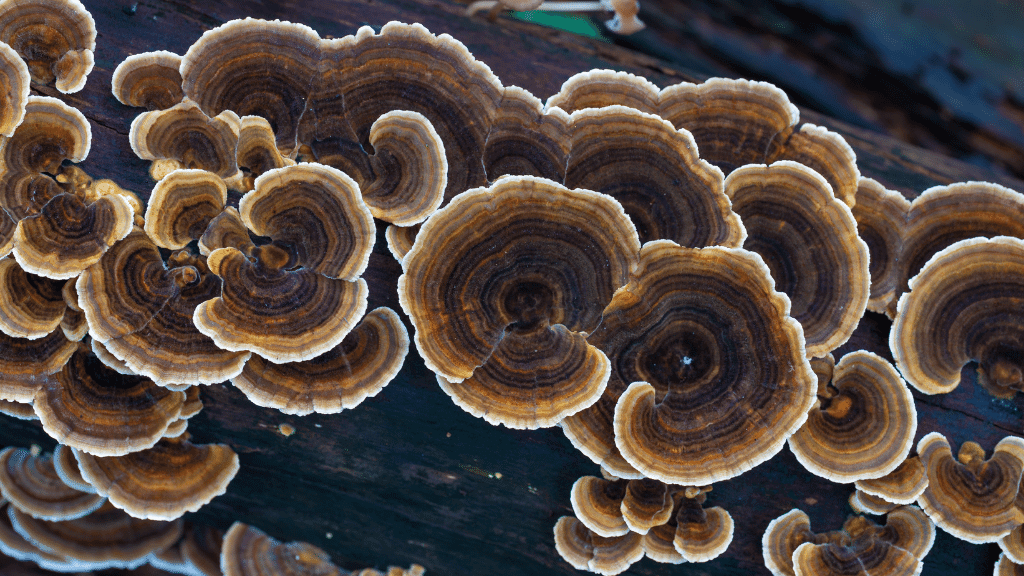
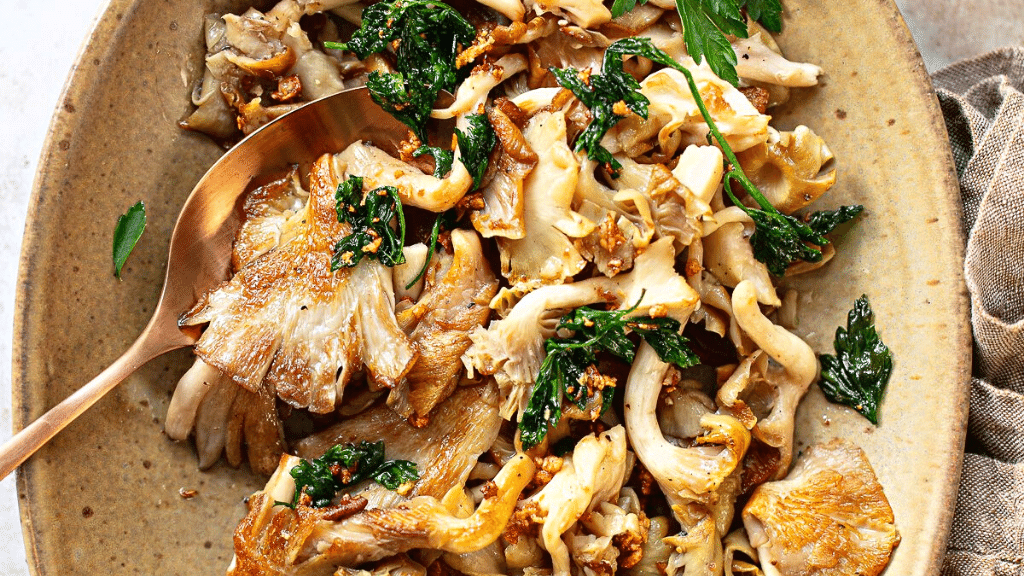


.png)
